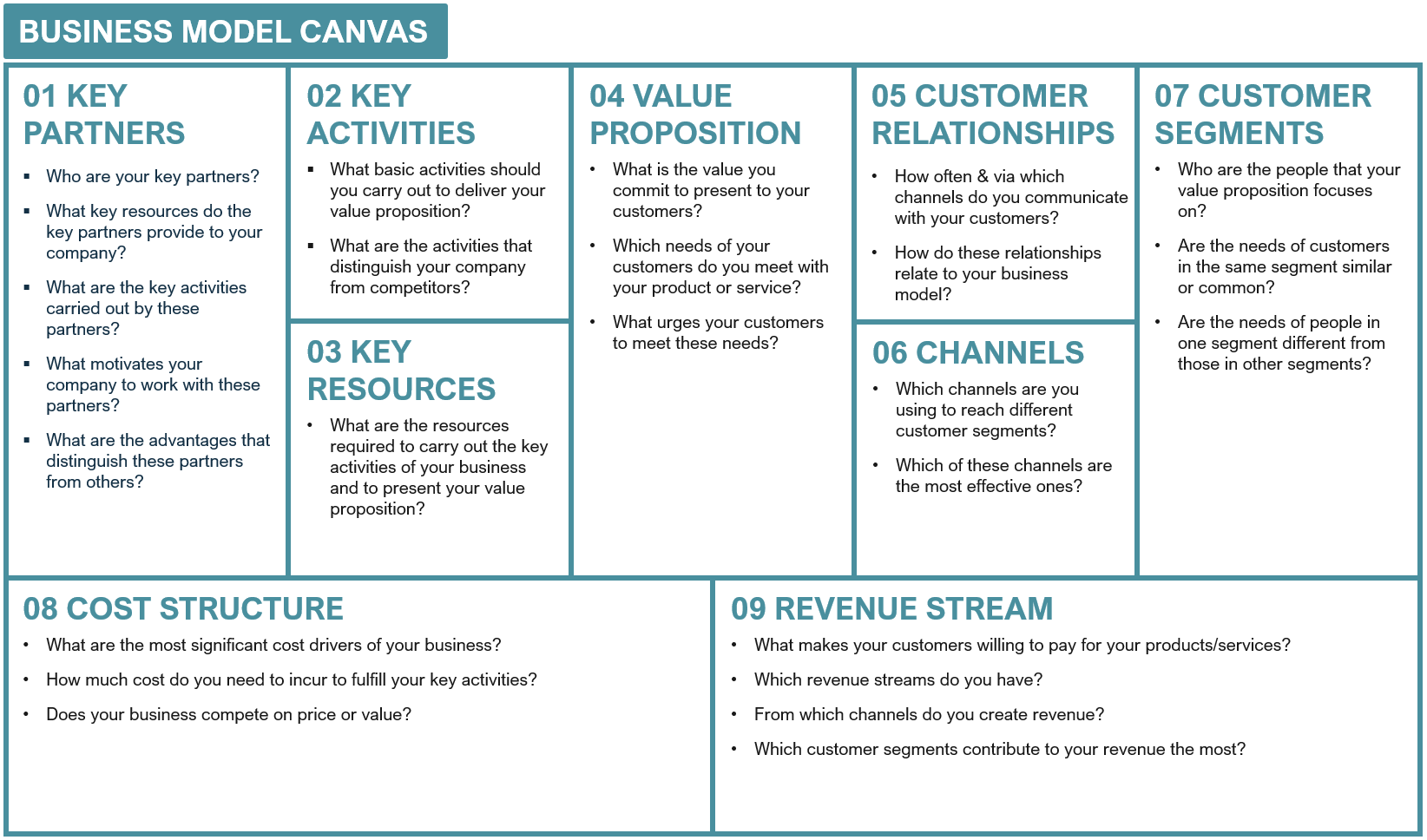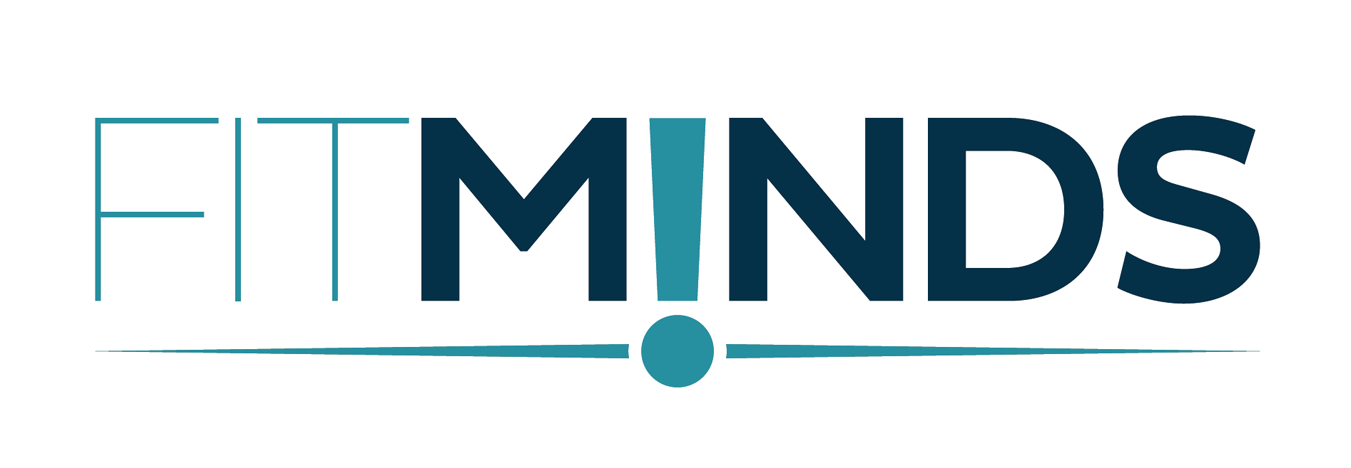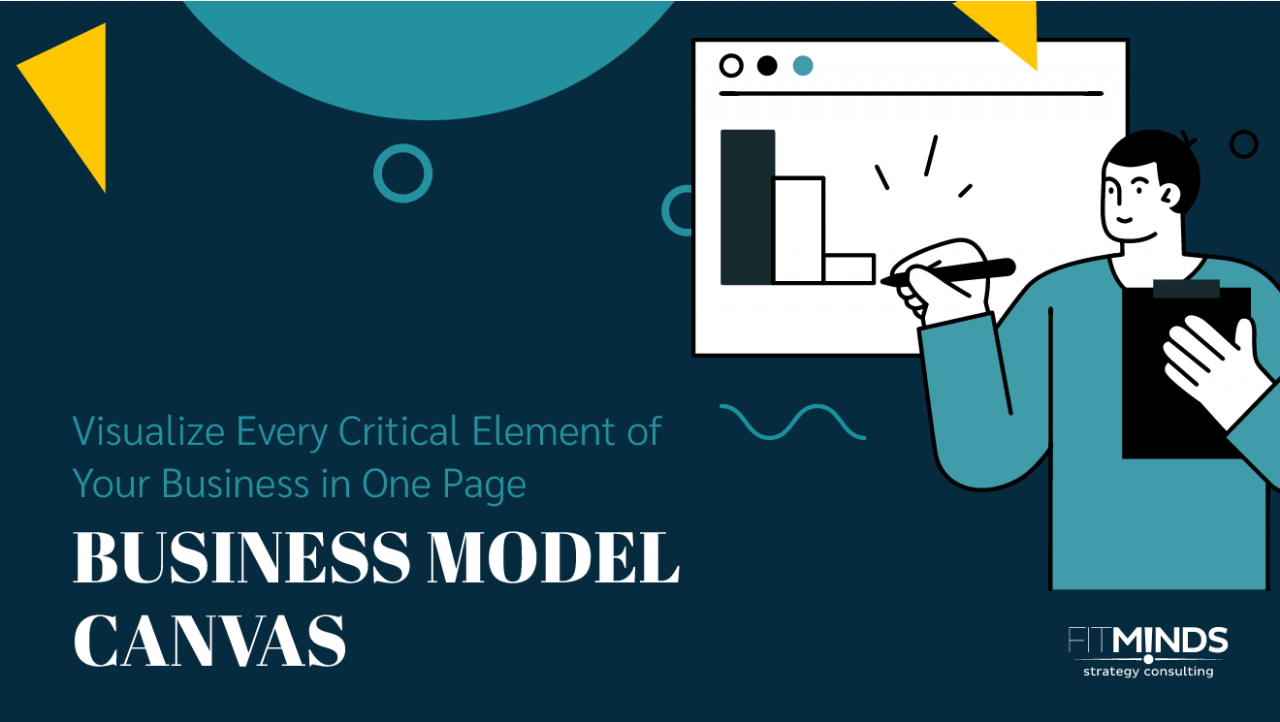What is the Business Model Canvas?
The Business Model Canvas is a strategic management tool used to present and visualize a business idea consistently and clearly.
It allows you to state almost everything about your business plan on one page. In other words, it provides you with a summary of how you plan to manage your business.
The canvas consists of nine interrelated components. You can follow the steps below to create one for your company:

1. Key Partners
Key Partners are companies or individuals with whom your business works within the framework of strategic relationships. They help you conduct your key activities and create value for your customers. Suppliers, distribution partners, and other external companies can be given as examples to your key partners.
Things to consider about Key Partners include:
- Who are your key partners?
- What key resources do the key partners provide to your company?
- What are the key activities carried out by these partners?
- What motivates your company to work with these partners?
- What are the advantages that distinguish these partners from others?
2. Key Activities
Key activities are the specific activities and tasks that your business conducts. They are the activities that allow you to deliver your value proposition to the customers.
Try to answer the questions below to determine your Key Activities:
- What basic activities should you carry out to deliver your value proposition?
- What are the activities that distinguish your company from competitors?
- What key activities do you perform to manage your distribution channels, customer relations, and revenue model?
3. Key Resources
Key Resources are the resources required to operate your business and deliver your value proposition. You need these resources to carry out your basic activities.
Questions to answer when listing your Key Resources:
- What are the resources required to carry out the key activities of your business and to present your value proposition?
- What resources do you need to ensure that your distribution channels are intact?
- What resources do you need to maintain healthy relationships with customers?
- What are the different types of resources you need (physical, intellectual, human, or financial)?
To understand if your existing resources are sufficient for your business to have a competitive advantage, you can read our article about the VRIO Framework.
4. Value Proposition
Value Proposition refers to the basic concept of value exchange between your company and your customers. It presents the mission of your business and the value your business promises to offer to the customers.
Things to consider when determining your Value Proposition:
- What is the value you commit to present to your customers?
- Which needs of your customers do you meet with your product or service?
- What urges your customers to meet these needs?
5. Customer Relationships
Customer Relationships refer to the relationships your business establishes with its customers. It enables you to form long-term relationships with customers and turns your target audience into loyal customers over time. Thanks to the bond you will have with your customers, you can understand their needs more clearly and produce effective solutions.
Try to answer the questions below to form better Customer Relationships:
- What types of relationships does your business have with different customer segments?
- How often do you communicate with your customers?
- Through which channels do you establish this communication?
- How do these relationships relate to your business model?
- How costly is it to maintain these relationships?
To identify your customers’ needs, expectations, and pain points, you can make use of Customer Journey and Empathy Mapping.
6. Channels
Channels refer to the ways and methods you use to deliver your value proposition to your customers. Clearly defining these channels allows you to understand how you can interact with your customers.
Always keep the following in mind:
- Which channels are you using to reach different customer segments?
- Which of these channels are the most effective ones?
- Which of these channels have the least cost?
- How integrated do your supply, distribution, marketing, and communication channels are?
7. Customer Segments
Customer segmentation is the process of grouping customers that display similar behavior and characteristics in a defined market. By dividing your target customers into segments, you can focus your efforts and use your resources efficiently. Moreover, segmentation enables you to allocate your investments optimally.
Things to take into account when creating Customer Segments:
- Who are the people that your value proposition focuses on?
- Are the needs of customers in the same segment similar or common?
- Are the needs of people in one segment different from those in other segments?
- Do customers in the same segment give similar reactions to your products or services?
In order to make this process easier, you can make use of a practical tool called Buyer Persona and picture your target customers.
8. Cost Structure
Cost Structure refers to the costs you have to bear to run your company’s business. Classifying your costs in a structured way allows you to identify possible improvements more easily.
While preparing your cost structure, you can look for answers to the following questions:
- What are the most significant cost drivers of your business?
- How much cost do you need to incur to fulfill your key activities?
- Does your business compete on price or value?
- Do your costs mostly variable or fixed?
- How do your costs change with the sales?
9. Revenue Streams
Revenue Streams refer to the revenue sources generated by the solutions you find to fulfill the needs of your customers. The value proposition you produce for your customers’ problems provides you with financial return.
What you should be aware of about Revenue Streams:
- What makes your customers willing to pay for your products/services?
- Which revenue streams do you have?
- From which channels do you create revenue?
- Which customer segments contribute to your revenue the most?
- How does your pricing strategy affect your revenues?
Conclusion
Business Model Canvas (BMC) is a powerful tool to picture your activities, resources, customers, and financials on one page. By filling out each component of the canvas one by one, you will obtain a clear understanding of how they relate to one another.
Contact us to create the canvas of your business and adjust your strategy accordingly.




13 comments
Pingback: achat kamagra pharmacie emplette contre
Pingback: enclomiphene australia generic online
Pingback: cod delivery androxal
Pingback: buying flexeril cyclobenzaprine cost of tablet
Pingback: buy dutasteride uk online
Pingback: get fildena cost insurance
Pingback: cheapest buy gabapentin uk in store
Pingback: buying itraconazole generic ireland
Pingback: cod staxyn overnight saturday no prescription
Pingback: buying avodart usa price
Pingback: purchase rifaximin usa buying
Pingback: saturday delivery xifaxan cod
Pingback: jak předpis může dostat na 1 kamagra pilulku
Comments are closed.